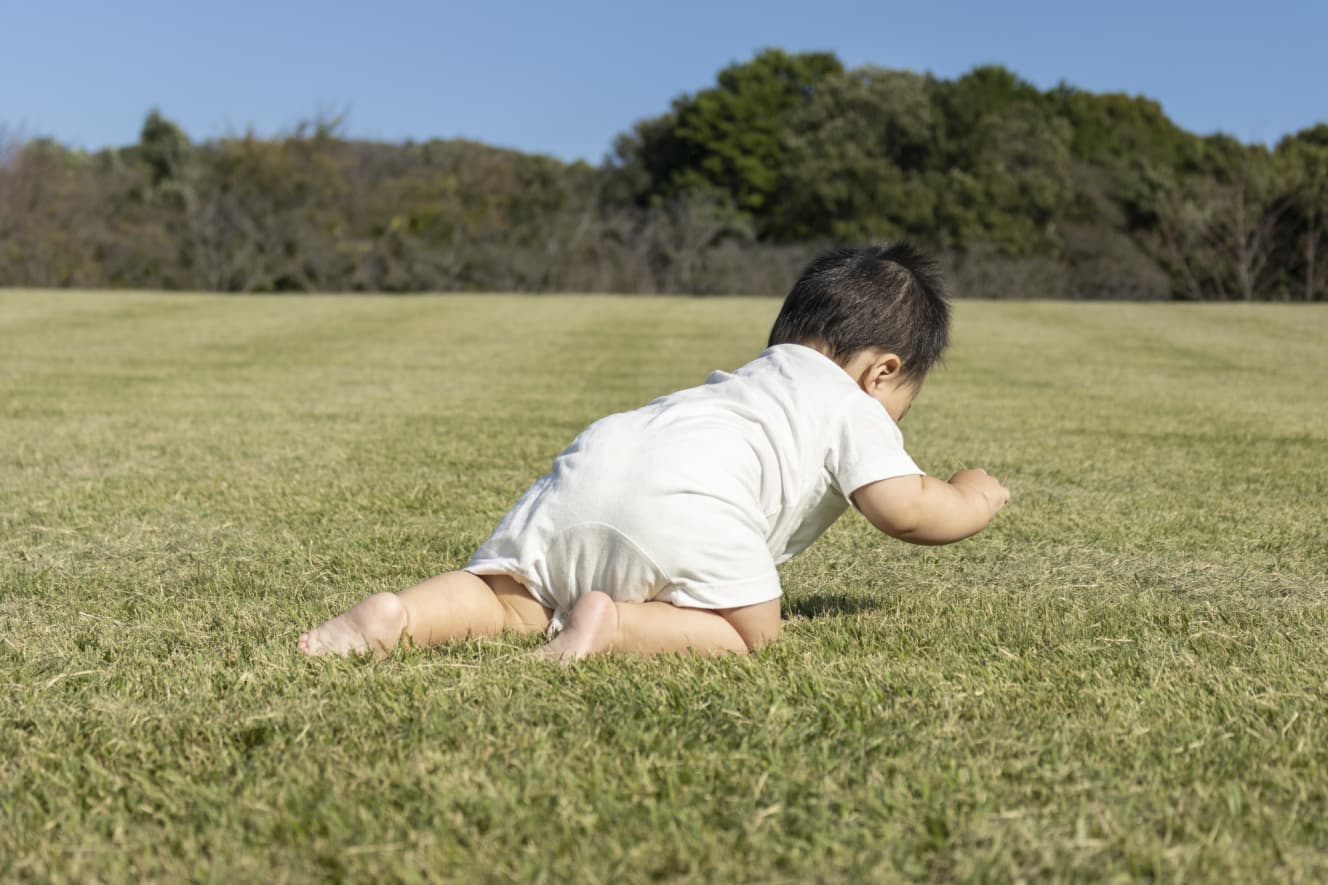Serious Decline in Children’s Physical Ability as Parents Prevent Toddlers from Crawling
Nonfiction author Kota Ishii takes a close look at the society and incidents that are looming! Shocking Reportage
In daycare centers and kindergartens, there have been concerning developments regarding children’s physical activity in recent years.
At one daycare, the need has arisen to have some children wear head guards. A head guard is a helmet-like device that serves as a cushion. Children with low physical ability can suffer serious injuries when they fall and hit their heads on the floor, so this is used as a protective measure.
How has children’s physical ability changed?
Following the article “Children’s Physical Abilities Decline Dramatically as Fracture Rates Double and ‘Radio Calisthenics’ is Banned,”
I would like to consider the recent “changes” in preschool children by quoting from the book “Report: Smartphone Parenting is Ruining Children” (by Kota Ishii, Shinchosha).
According to the director of a daycare center in Tokyo, children’s physical abilities have been declining year by year, with a noticeable deterioration occurring over the past decade. The COVID-19 pandemic has further accelerated this decline.
The director stated:
“About ten years ago, children began to look at smartphones while being dropped off or picked up from the daycare. They would be staring at their phones while in strollers or riding bikes. Most of the children who clearly had low physical abilities were like that. However, during the pandemic, this sight became commonplace, and a portion of those children started to face issues with physical development.”
Children are unable to skip.
It is not solely because they look at smartphones during drop-off and pick-up times that their physical abilities are declining. Families that show their children smartphones during these gaps often do so during other times as well and tend to lack awareness about fostering physical abilities. This has led to the fragility of children’s physical capabilities.
So, where do educators notice the decline in children’s physical abilities? The director mentioned the following phenomena, which occur among children in the older preschool age groups:
- They cannot even stand for one minute and end up sitting down.
- They get tired while sitting on the floor and lie down flat.
- They are unable to jump with both feet together or skip.
- They fall after jumping, unable to land properly.
Typically, children aged five to six are imagined to be running around and playing in the playground, but those whose physical abilities have not developed appropriately for their age often do not play outside and instead remain confined to the daycare, sometimes only asking for “Can I borrow your smartphone?” or “I want to play a game.”

Standing, sitting on the floor, and jumping seem like natural movements for a person. Why are there more children who cannot perform these actions?
One educator interviewed for this article shared an astonishing observation.
“One contributing factor is the increasing number of children who are not allowed to crawl at home. Generally, crawling is considered essential for children to develop their overall muscle strength and core stability. Therefore, if they are not allowed to crawl, even when they learn to walk, their muscle strength and balance are insufficient, making it difficult for them to perform basic movements.”
Children typically begin to crawl on all fours between eight months and one year of age. This activity helps them develop the strength and balance needed for bipedal walking. However, the question remains: why is this not happening?
Children are tied to chairs for long periods.
The previously mentioned educator states:
“To crawl, children need a space where they can move freely, and parents must properly supervise them. However, if the home is small or if parents are too busy to pay attention, they cannot allow their children to crawl.
In such families, children are often tied to a chair for extended periods. They sit still, and if you show them a smartphone, they won’t get bored. As a result, they skip crawling and go straight to using a baby walker. This allows them to practice moving their legs and eventually learn to walk.”
A baby walker is a type of infant walking aid where a child can sit at the center of a circular table. While it does allow the feet to touch the floor, enabling the child to practice walking, it doesn’t support their weight with their body. Therefore, compared to crawling independently in a space with obstacles, it’s unclear how much motor skill development can be expected from using a baby walker. In fact, some researchers have expressed concerns that baby walkers may hinder physical development.
Additionally, I would like to touch upon societal trends that may hinder children’s growth in the second part of this series, “Children Forbidden to Exercise and the Social Trend of Hindered Physical Development.”
Reporting and writing: Kota Ishii
Born in Tokyo in 1977. Nonfiction writer. He has reported and written about culture, history, and medicine in Japan and abroad. His books include "Absolute Poverty," "The Body," "The House of 'Demons'," "43 Killing Intent," "Let's Talk about Real Poverty," "Social Map of Disparity and Division," and "Reporto: Who Kills Japanese Language Ability?
